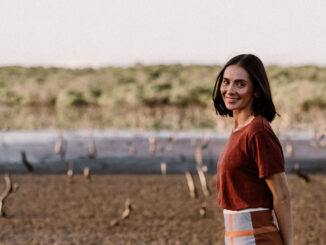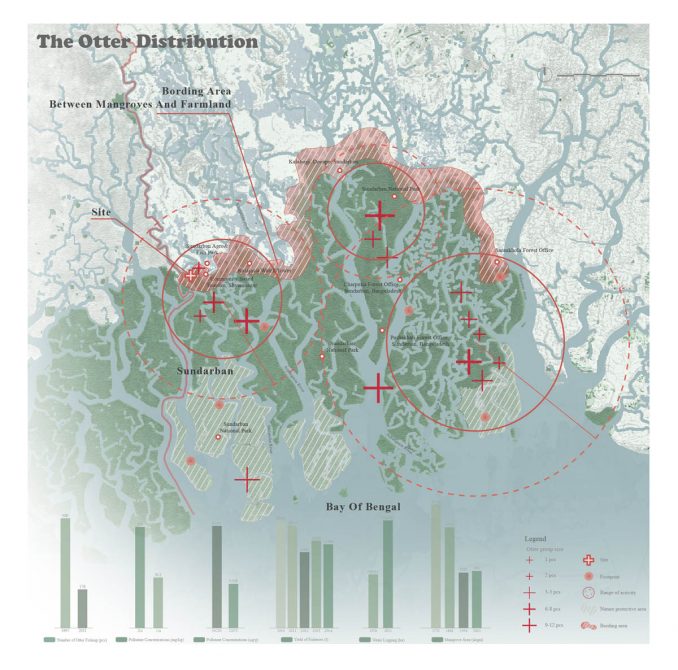
Otters, a lovely animal figure, used to have a close relationship with humans. Otter fishing is a fishing technique which utilizes trained otters to fish in river. It has been practiced since the 6th century and is still practiced in southern Bangladesh. The otters have helped thousands of fishermen to subsist in this region, but this rare tradition is in danger as rivers are polluted and the fish population is declining. Otters are also in danger because of the degradation of mangrove by aquaculture, the contamination of river by pesticides and reduced popular interest in otter-raising.
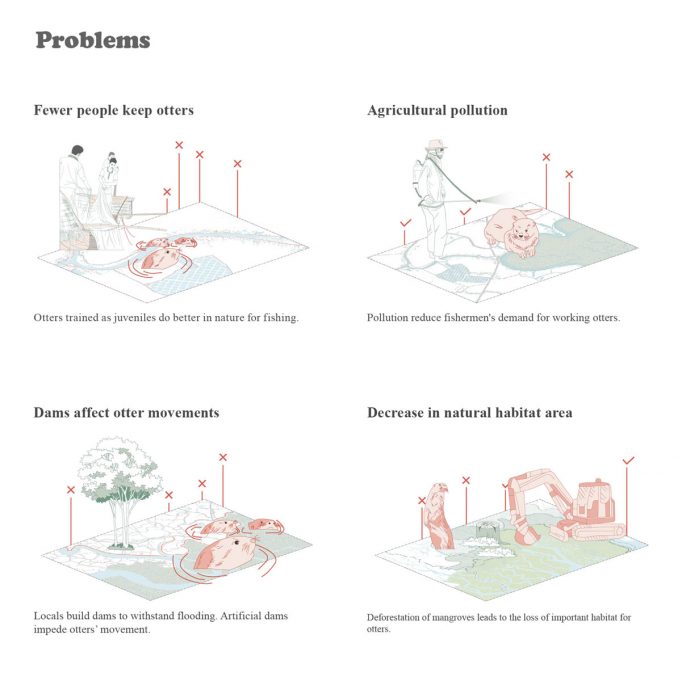
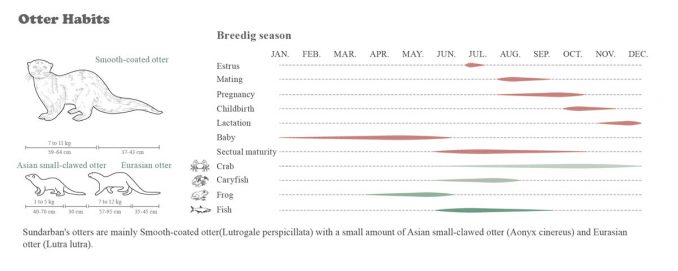
Therefore, the project explores a new reciprocal co-living model for humans and otters to persevere the fishing-tradition, improve the local economy and maintain a moderate otter population. With the intention of protecting the otters’ home together with humans and their natural home in the mangrove forest, we came up with our concept: From “home” to home.
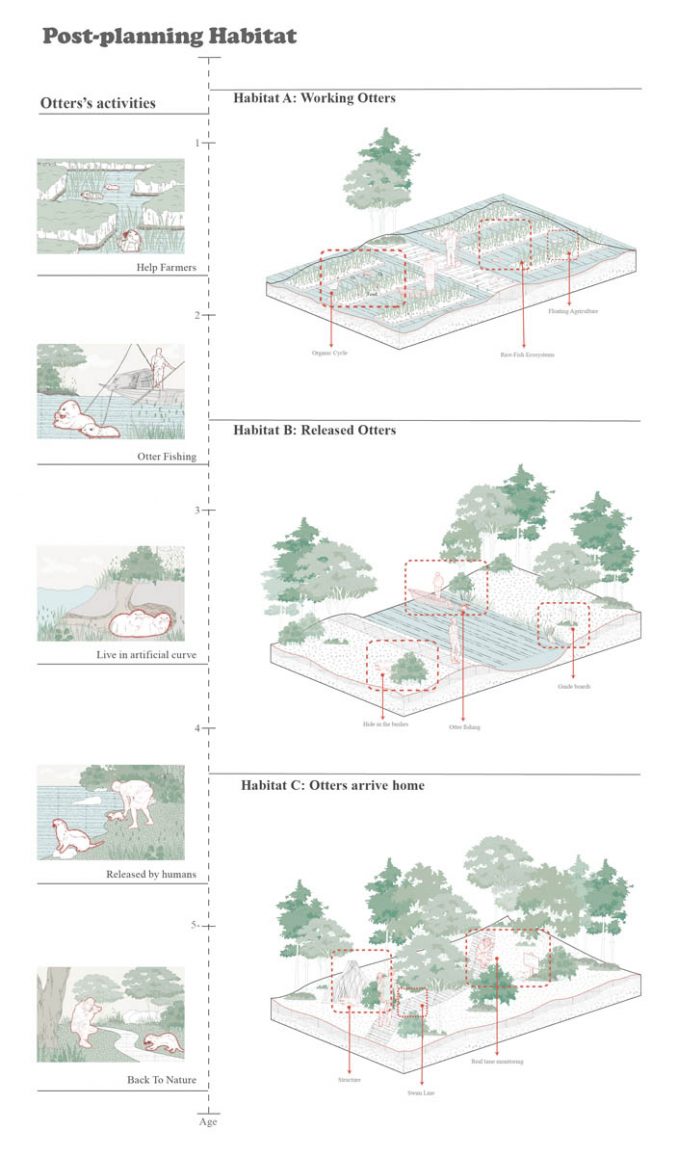
3 most characteristic habitats for otters are mapped out.
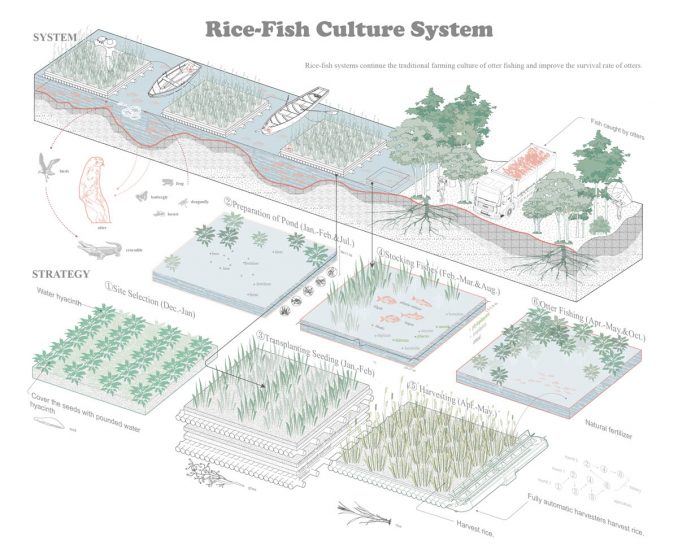
The first one is the farmland space for human living and production, where otter breeding is carried out. Captive otters have higher survival rates, which preserves otter-fishing tradition. Therefore, the rice-fish system, operating two rounds a year, is mutually beneficial for otters and humans. This system is the foundation of otter conservation.
The second is a transitional space between the village and Sundarbans. When otters have bred four generations, the villagers are guided by the community to release the 3-4 years old otters into the bordering area between mangroves and farmland. The embankments are transformed into ecological soft barges with native plants, which can facilitate the habitat for otters and improve the environment. We also set up artificial nests to assist otters. We simulate mangrove root system and design a single burrow as a unit. In this way, they can be directly placed and assembled on the riverbank. The underground part of the nest is for otters to live, and the above-ground part is used to capture silt.
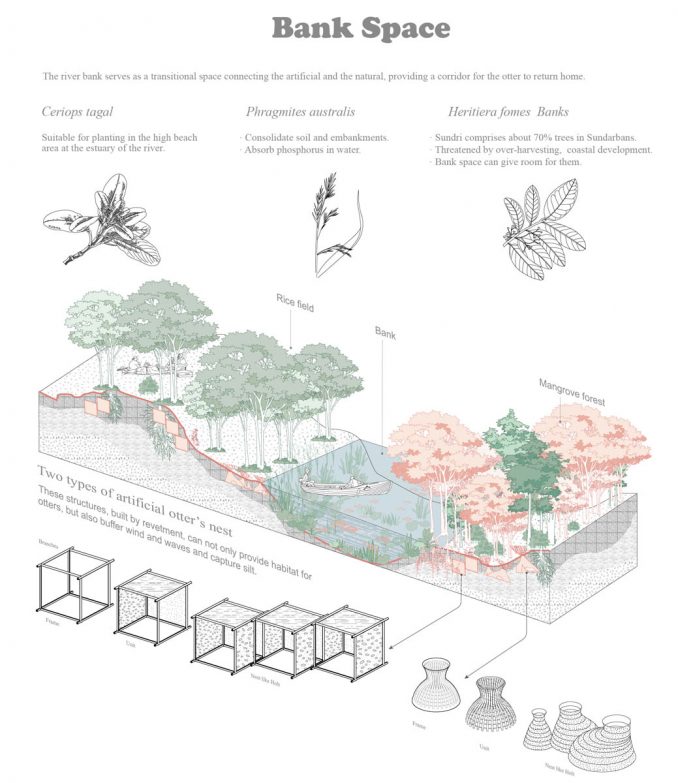

The third is the final habitat for otters, which combined with Sundarbans National Park to improve the suitability of mangroves for otters. Reed beds, artificial watercourses and artificial curves are used to help otters gradually move from low suitability areas to high suitability ones. Low-impact tourism projects, such as traditional otter fishing and walkways, are adopted to increase the income of local residents and rebuild the relationship between people and otters. Additionally, researchers, governments and residents will work together to monitor the otters’ health to ensure their livelihoods.
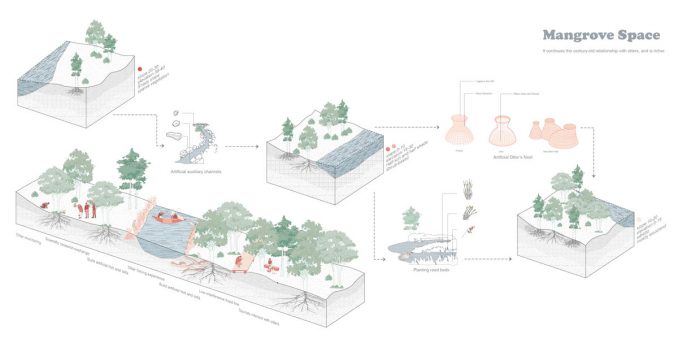
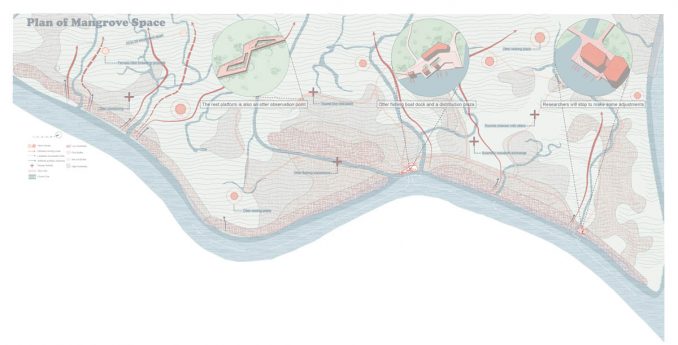
To ensure a smooth “homecoming” process, safeguards are provided. In the short term, community and government campaigns will guide villagers to protect and breed otters. We use tradition and its attraction to tourists to increase the income from agriculture, fishery, and agritainment. In the long term, through advocacy and scientific monitoring, the awareness and actions of people to protect otters will be gradually increased.
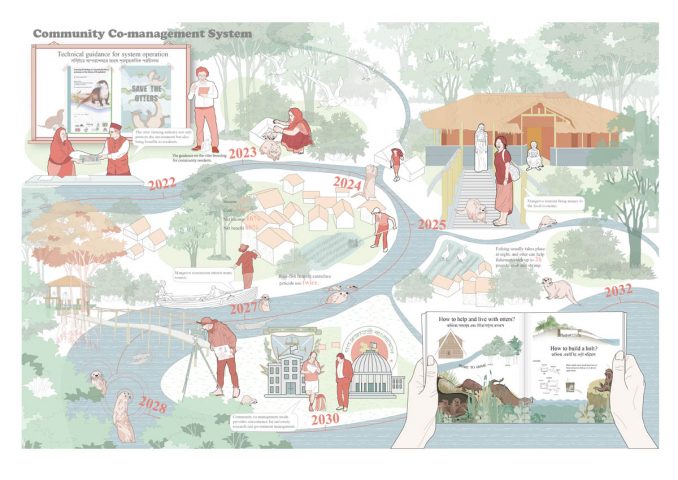
Student Project | From “Home” to Home | Yufei Wang & Siyi Liang & Longshu Li & Yuxin Chen
Project Name: From “Home” to Home
Student Name: Yufei Wang (Huazhong Agricultural University), Siyi Liang (Huazhong Agricultural University), Longshu Li (Inner Mongol University of Technology), Yuxin Chen (Inner Mongol University of Technology)
Advisors: Xinqi Zhuang, Shijia Han, Junyao Ren


